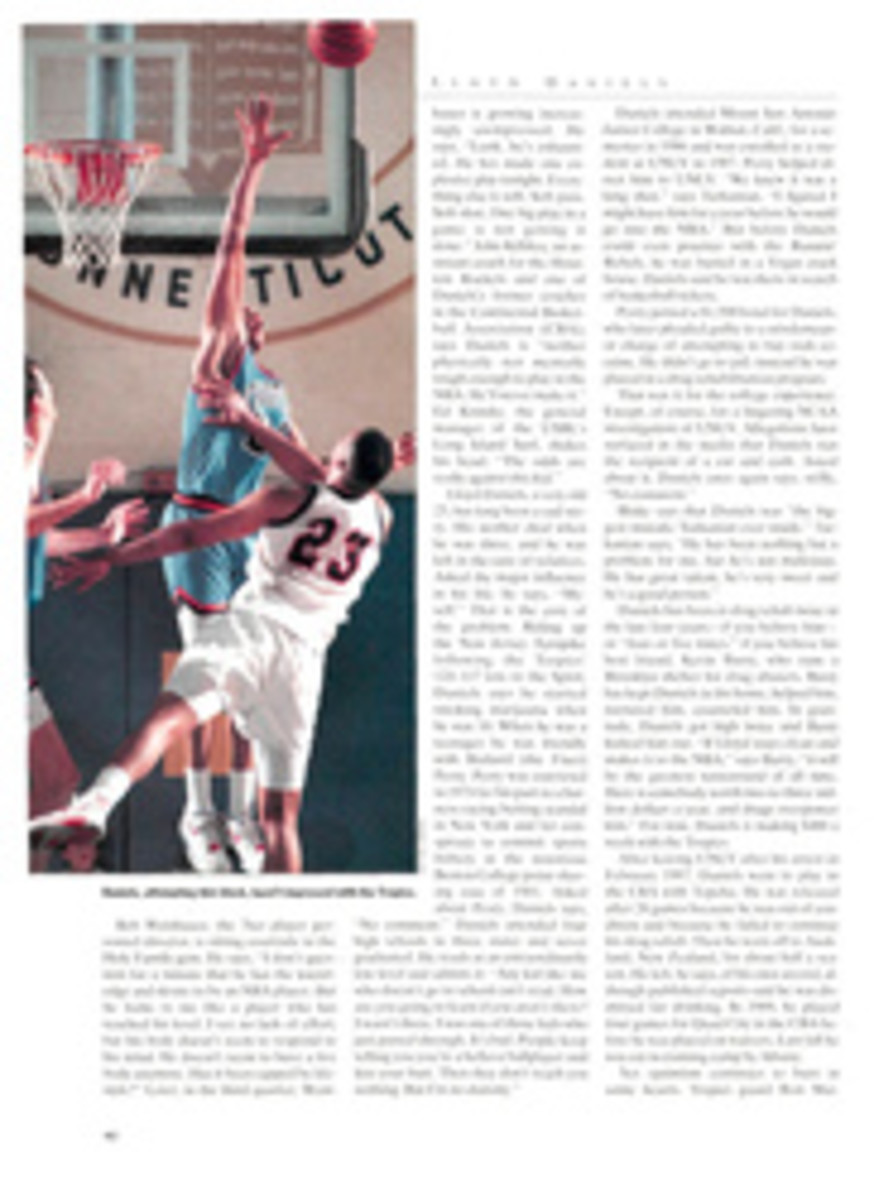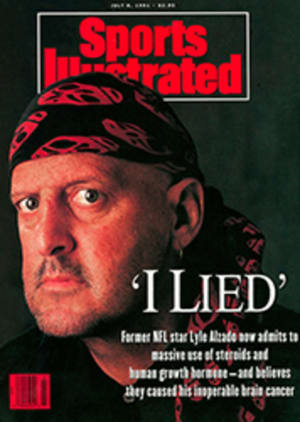
Baseball
The Star Nobody Knows
In New York, the town that can make a good player seem like a great one, Mets third baseman Howard Johnson remains surprisingly underrated. Ask fans—even in the Big Apple—to name the top 20 players in the game, and few will mention Johnson. Yet he is having his fifth-straight standout year. Through Sunday, he led the National League in home runs (17), was tied for second in RBIs (55) and was tied for third in runs scored (48).
Without bitterness, Johnson agrees he has been overlooked. "When I came here, I was a small part of the team," he says of the trade that brought him to the Mets from the Tigers on Dec. 7, 1984, for pitcher Walt Terrell. "We had Keith Hernandez, Darryl Strawberry, et cetera. Guys like me, Rafael Santana and Tim Teufel were fill-ins. I wasn't an every-day player until 1987. In a way, that first impression is the one people still have of me."
Since he become an every-day player, however, Johnson has been one of the most consistent players in the game. From the start of the 1987 season through last week, only Joe Carter had a higher combined total of home runs, RBIs and stolen bases—indicators of power, production and speed—than Johnson. And despite being one of only three players in history, and the only infielder, to have two 30-homer and 30-steal seasons, Johnson has played in only one All-Star Game, in 1989, and he has had few endorsement opportunities.
"The only offensive player in this town was Strawberry; everyone focused on him," says Mets pitcher Ron Darling. "In the past, this team was defined by starting pitching and Strawberry. But now [with Strawberry gone], there is plenty of spotlight out there. The thing about HoJo is, he's never had a season that distinguished him from everyone else. He's never had an MVP year, he's never led the league in anything. But he does everything well. The only thing he hasn't done is hit for average."
Johnson's lifetime average was .256 coming into this season. And in postseason play he has hit only .038 (1 for 26), another reason why he hasn't received the attention he's due. Cardinals manager Whitey Herzog's charge in 1987 that Johnson's bat was corked didn't help HoJo's status, either. Nor has his defense. He's an adequate third baseman, but, as Darling says, "sometimes his arm goes berserk." His erratic throws have led to a lot of errors—his total of 16 through Sunday was second only to the Astros' Eric Yelding for the National League lead.
But if Johnson is such a bad fielder, why was he asked to fill in at shortstop after Kevin Elster underwent shoulder surgery last August? Johnson went 39 games without an error at short, and his willingness to make the move allowed New York to keep Gregg Jefferies in the lineup at third. "I looked at it as a challenge to see how good I could become," Johnson says.
The challenge for the 30-year-old Johnson this year is to help the Mets make up for the loss of Strawberry. "Everywhere you turned, it was Darryl. If he hits, we win—that was the mentality," says Johnson. "That's not a good mentality. We all have to carry the load."
So far, HoJo has carried his share—and more.
Yet Another Rebuilding Project
The June 27 trade of pitcher Tom Candiotti from the Indians to the Blue Jays may bring an American League East title to Toronto, but it also gave rebuilding Cleveland a reasonable facsimile of a big league lineup for the first time this year.
In the deal, the Indians got outfielders Glenallen Hill and Mark Whiten (plus pitcher Denis Boucher), who should help an offense so bad that it has had streaks of 21 and 23 innings in which a runner failed to get to third base. Through Sunday, the Indians had scored 63 fewer runs than any other team in the league.
Cleveland had offered Candiotti a three-year deal worth $7.2 million in spring training, but when his counterproposal of four years for $10 million was rejected, he threatened to leave as a free agent after the season if an agreement wasn't reached by the All-Star break. So the Indians decided to get some value for him while they could.
Now, with Hill, Whiten, Albert Belle, Sandy Alomar Jr., Mark Lewis, Reggie Jefferson and Carlos Baerga on hand and minor leaguer Jim Thome on the way, Indians director of baseball operations Jim Hart can reasonably say, "We have quietly put into place a team that, two or three years down the road, will have an impact-type offense."
Only time will tell if he's right. Until then, Cleveland will continue to rebuild and will avoid signing what Hart calls "large free agents." Candiotti believes the Indians are just trying to unload high salaries. "It shows me they're not trying," he said after the trade, "and that's sad."
The situation for the Indians is sad. They had the worst record in baseball through last weekend; they haven't finished within 10 games of first place in a full season since 1959; they play in an old, outdated stadium; and they aren't drawing well. Even Hart says, "You can't deny the economics of the situation here."
The Indians are negotiating with the city to build a new stadium by 1994. "We have to have it," says Hart. "There's no way we can compete in this division without it, not only from an economic and marketing standpoint but also from a psychological standpoint for the players. This organization has been down. It's been undercapitalized since the '50s. We've been one of the have-nots of baseball. The best part is, these young players together will move into the new stadium."
Classic Underachievers
Here are four pitchers who have struggled this year for no apparent reason. Watch them work, and you wonder why, with their stuff, they aren't big winners.
•John Smoltz, Braves: He was 2-10 with a 4.81 ERA at week's end and had lasted more than seven innings in only three of his 17 starts. He throws extremely hard but gets flustered easily. He has to start believing that he can be the ace of the Atlanta staff.
•Andy Benes, Padres: He had won only four of his last 23 starts, through Sunday. Former San Diego pitching coach Pat Dobson said Benes should be a closer, but there is no plan to move him into that role.
•Jack Armstrong, Reds: He has struggled since the first half of 1990, when he went 11-3. Since then he has gone 6-12. He may be thinking too much on the mound. "Sometimes you suffer from paralysis by analysis," he says.
•Kevin Brown, Rangers: He has pitched well in his last four starts, but it's unfathomable how he could have allowed 139 hits and walks in his 89‚Äö√Ñ√∂‚àö√±‚àö¬® innings. If the high-strung Brown learns to control his emotions on the mound, he might become a big winner.
Short Hops...
The Angels' streak of 14 consecutive errorless games—an American League record—ended last Saturday when Dave Winfield mishandled a chance in right-field. California's defense has played a big part in the Angels' staying in contention in the American League West this season. California made 65 errors in its first 74 games last year and 38 in its first 74 this season. Its longest errorless streak last year was four games....
Angel reliever Mark Eichhorn walked his first batter of the season last week on a 3-2 pitch to the Royals' Jim Eisenreich. It was Eichhorn's first base on balls since Sept. 15, 1990; he faced 168 batters during that span....
Cub shortstop Shawon Dunston has remarkable talent, but through Sunday, he was batting .236 with only 10 walks. He can become a free agent after the season and is expected to leave Chicago. The Cubs are trying to trade him before then.
PHOTO
JACQUELINE DUVOISIN
Johnson admires a blast that could win him admirers, even in New York.
BETWEEN THE LINES
The First Player-Commissioner
Pirate outfielder Andy Van Slyke talked with commissioner Fay Vincent before a game at Three Rivers Stadium on June 25. "I told him I had three gripes," said Van Slyke. "One, they should allow only one trip by the catcher to the mound per inning, to speed up play. Two, a runner on first should be allowed to score on a ground rule double if the umpire thinks he could have scored. And three, ban the DH." Asked how Vincent responded, Van Slyke laughed and replied, "He said I have too many gripes. But when I'm the commissioner in 2005, I'll get these changes made."
A Whole New Ball Game
The first major league at bat for Cardinals pitcher Willie Fraser, a six-year veteran, came on June 28 in the ninth inning of a game against the Cubs. Fraser faced Chicago outfielder Doug Dascenzo, who was mopping up in the 14-6 St. Louis victory, and struck out. "It never even dawned on me that I'd have to hit," said Fraser, who pitched for five years in the American League before the Cards picked him up on waivers last week. "I wanted to make contact, but really I just didn't want to get hit."
The Old Man and the Cycle
Last week the Angels' Dave Winfield, 39, became the oldest player ever to hit for the cycle. He completed it with a triple in the eighth inning off the Royals' Bill Pecota, an infielder who pitched the last two innings of California's 9-4 win. Pecota, meanwhile, became the third active major leaguer—joining the Cardinals' Jose Oquendo and the Red Sox's Steve Lyons—to play all nine positions at one time or another during his big league career.
By the Numbers
•Last week the Reds' Barry Larkin became the first shortstop in history to hit five home runs over two consecutive games. When he hit three off Houston's Jim Deshaies last Friday to complete the feat, Larkin joined Ernie Banks and Fred Patek as the only shortstops ever to hit three homers in a game.
•Oriole shortstop Cal Ripken got his 100th hit of the season last Friday; the next highest hit total by an American League shortstop was 64, by the White Sox's Ozzie Guillen.
•On June 26, Pirate catcher Mike LaValliere stole his first base since 1988. This season is the first in his seven-year career in which he has had both a triple and a steal.

